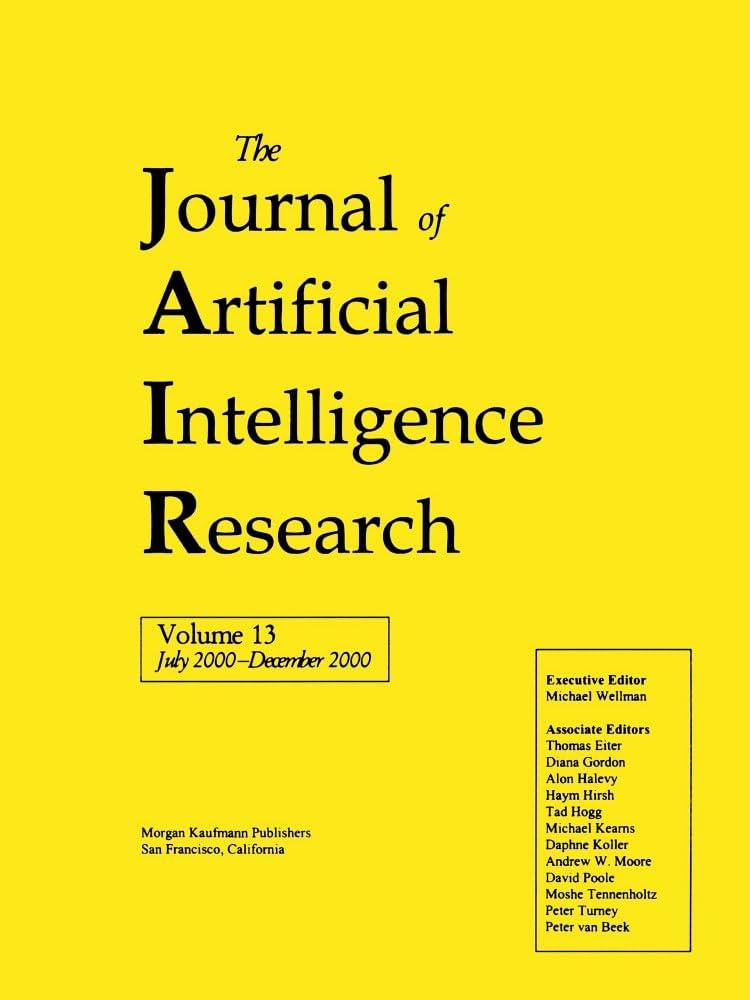基于网格导航的路径计数
IF 4.5
3区 计算机科学
Q2 COMPUTER SCIENCE, ARTIFICIAL INTELLIGENCE
引用次数: 4
摘要
计算网格上最短路径的数量是一个与帕斯卡三角形密切相关的简单过程。我们展示了路径计数如何用于为涉及空间环境导航的人工智能相关应用选择相对直接的网格路径。Dijkstra算法和A*算法的典型实现以任意方式优先考虑网格移动,产生明显偏离视线轨迹的路径。我们发现,通过计算遍历每个顶点的路径数,然后选择次数最高的顶点,可以得到一条在实践中相当直接的路径,并且可以通过改进网格分辨率来改进。介绍了中央Dijkstra和中央A*作为计算这些中心网格路径的基本方法。理论分析表明,本文提出的基于网格的导航方法与现有的基于网格的可见度方法相关,并确定了当网格间距接近于零时,中心网格路径收敛于清晰的视线。一个更普遍的性质,即中心路径收敛于直接路径,被表述为一个猜想。本文章由计算机程序翻译,如有差异,请以英文原文为准。
Path Counting for Grid-Based Navigation
Counting the number of shortest paths on a grid is a simple procedure with close ties to Pascal’s triangle. We show how path counting can be used to select relatively direct grid paths for AI-related applications involving navigation through spatial environments. Typical implementations of Dijkstra’s algorithm and A* prioritize grid moves in an arbitrary manner, producing paths which stray conspicuously far from line-of-sight trajectories. We find that by counting the number of paths which traverse each vertex, then selecting the vertices with the highest counts, one obtains a path that is reasonably direct in practice and can be improved by refining the grid resolution. Central Dijkstra and Central A* are introduced as the basic methods for computing these central grid paths. Theoretical analysis reveals that the proposed grid-based navigation approach is related to an existing grid-based visibility approach, and establishes that central grid paths converge on clear sightlines as the grid spacing approaches zero. A more general property, that central paths converge on direct paths, is formulated as a conjecture.
求助全文
通过发布文献求助,成功后即可免费获取论文全文。
去求助
来源期刊

Journal of Artificial Intelligence Research
工程技术-计算机:人工智能
CiteScore
9.60
自引率
4.00%
发文量
98
审稿时长
4 months
期刊介绍:
JAIR(ISSN 1076 - 9757) covers all areas of artificial intelligence (AI), publishing refereed research articles, survey articles, and technical notes. Established in 1993 as one of the first electronic scientific journals, JAIR is indexed by INSPEC, Science Citation Index, and MathSciNet. JAIR reviews papers within approximately three months of submission and publishes accepted articles on the internet immediately upon receiving the final versions. JAIR articles are published for free distribution on the internet by the AI Access Foundation, and for purchase in bound volumes by AAAI Press.
 求助内容:
求助内容: 应助结果提醒方式:
应助结果提醒方式:


